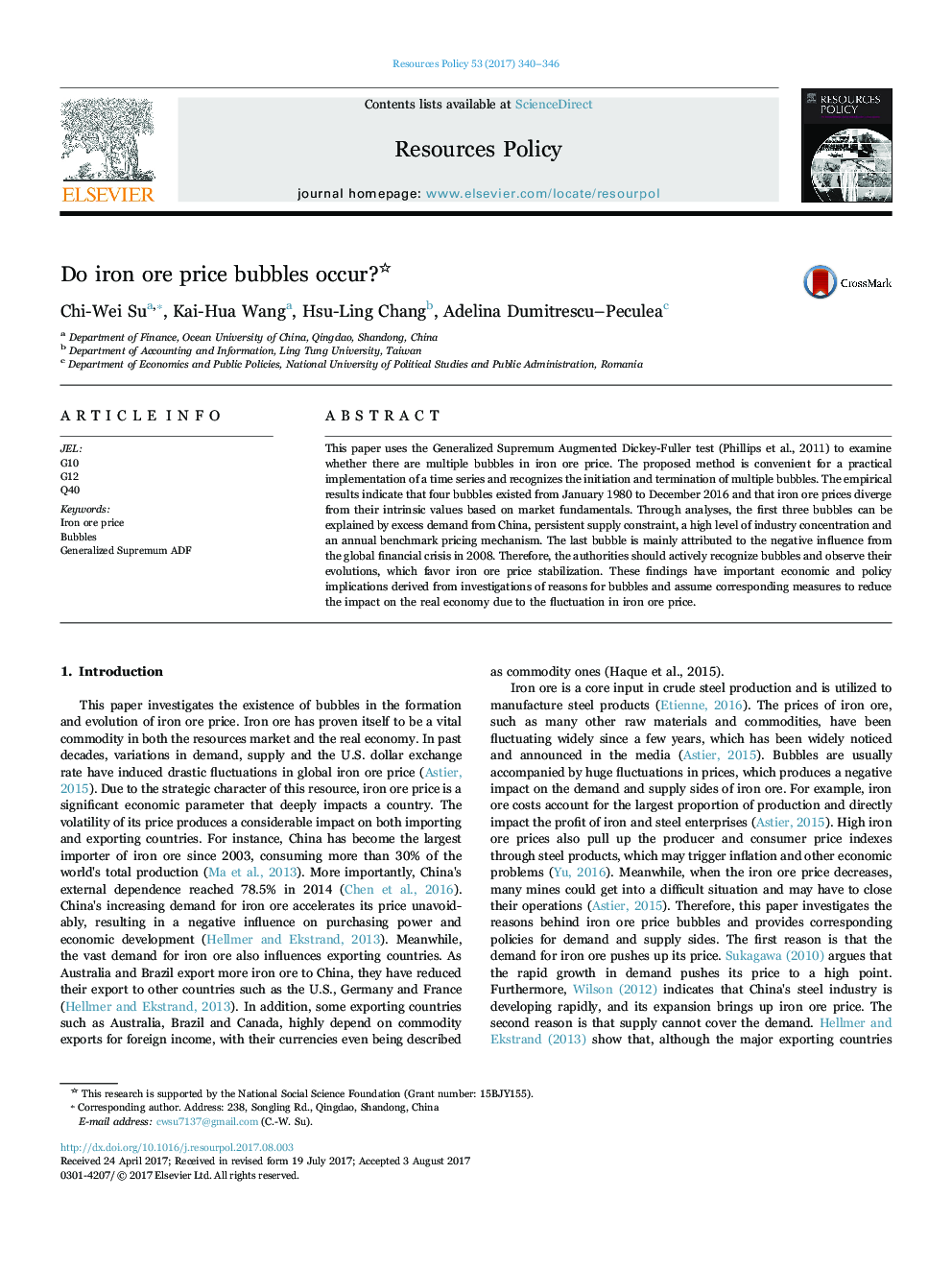| Article ID | Journal | Published Year | Pages | File Type |
|---|---|---|---|---|
| 5104173 | Resources Policy | 2017 | 7 Pages |
Abstract
This paper uses the Generalized Supremum Augmented Dickey-Fuller test (Phillips et al., 2011) to examine whether there are multiple bubbles in iron ore price. The proposed method is convenient for a practical implementation of a time series and recognizes the initiation and termination of multiple bubbles. The empirical results indicate that four bubbles existed from January 1980 to December 2016 and that iron ore prices diverge from their intrinsic values based on market fundamentals. Through analyses, the first three bubbles can be explained by excess demand from China, persistent supply constraint, a high level of industry concentration and an annual benchmark pricing mechanism. The last bubble is mainly attributed to the negative influence from the global financial crisis in 2008. Therefore, the authorities should actively recognize bubbles and observe their evolutions, which favor iron ore price stabilization. These findings have important economic and policy implications derived from investigations of reasons for bubbles and assume corresponding measures to reduce the impact on the real economy due to the fluctuation in iron ore price.
Related Topics
Physical Sciences and Engineering
Earth and Planetary Sciences
Economic Geology
Authors
Chi-Wei Su, Kai-Hua Wang, Hsu-Ling Chang, Adelina Dumitrescu-Peculea,
